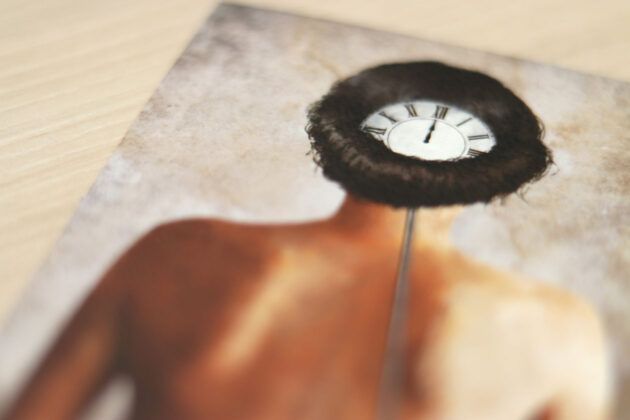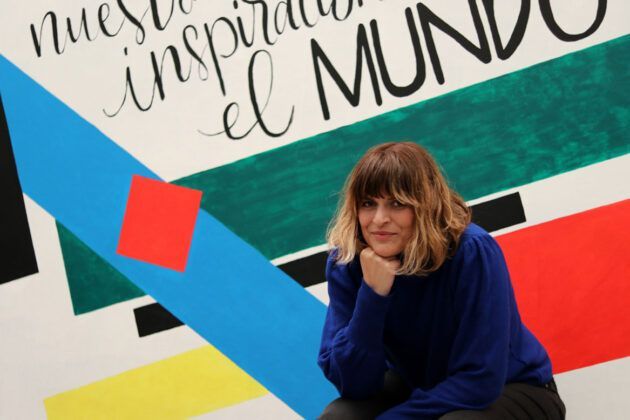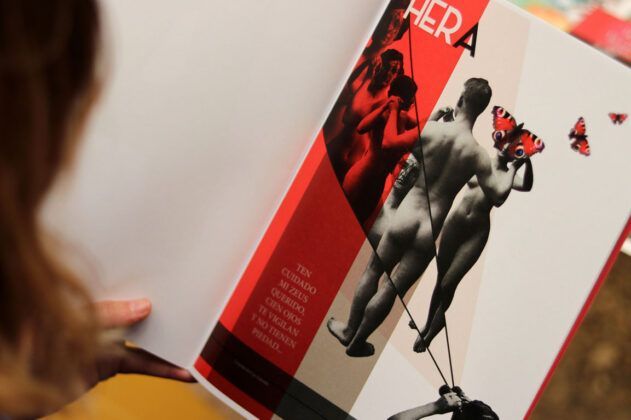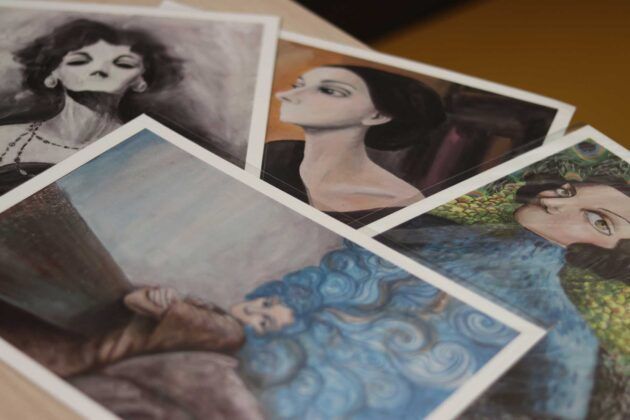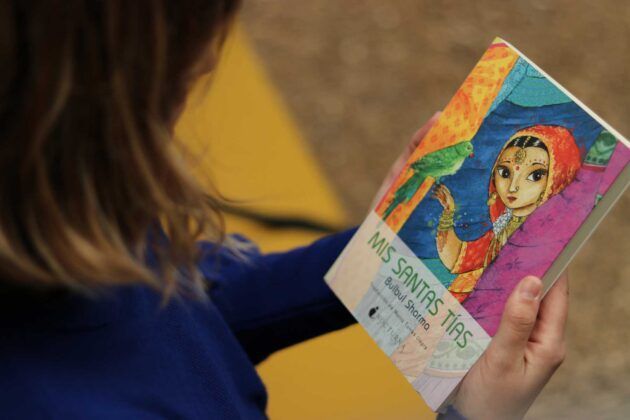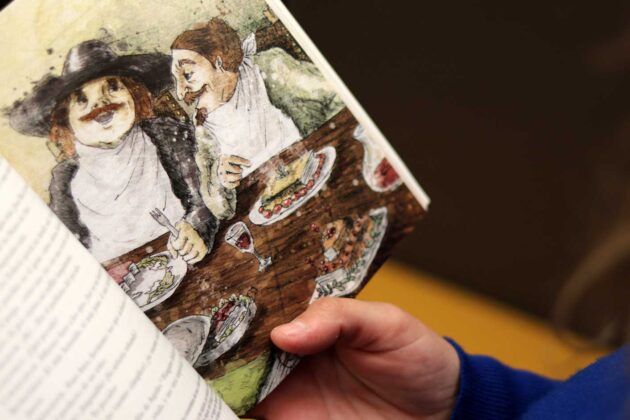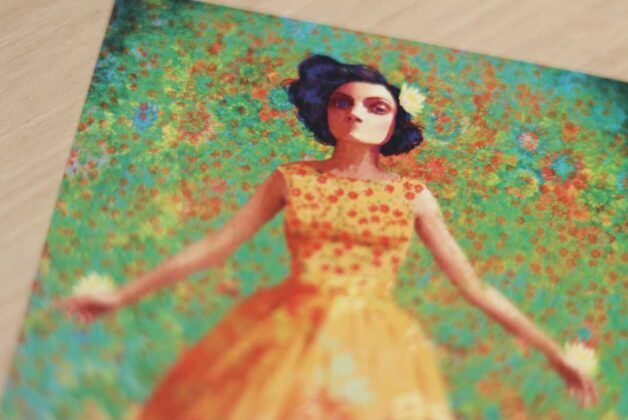The illustrator that can do everything. She has worked for the great, but she also likes the small. She was headhunted by big names like Anaya. Edelvives or Susaeta have front covers and inside pages illustrated by her; but the more select publishing houses such as Nocturna or Amargord also use her signed drawings to accompany their texts.
From her initial studies of Fine Art and Set Design at the Institut del Teatre, her journey towards professional illustration which, was full of impossible twists and turns, has led her to CEU Valencia. We were looking for a student for the Design and Graphic Communication Masters, but what we actually found was an artist.
Her name is Cristina de Cos-Estrada. With a C for creativity and a C for creator.
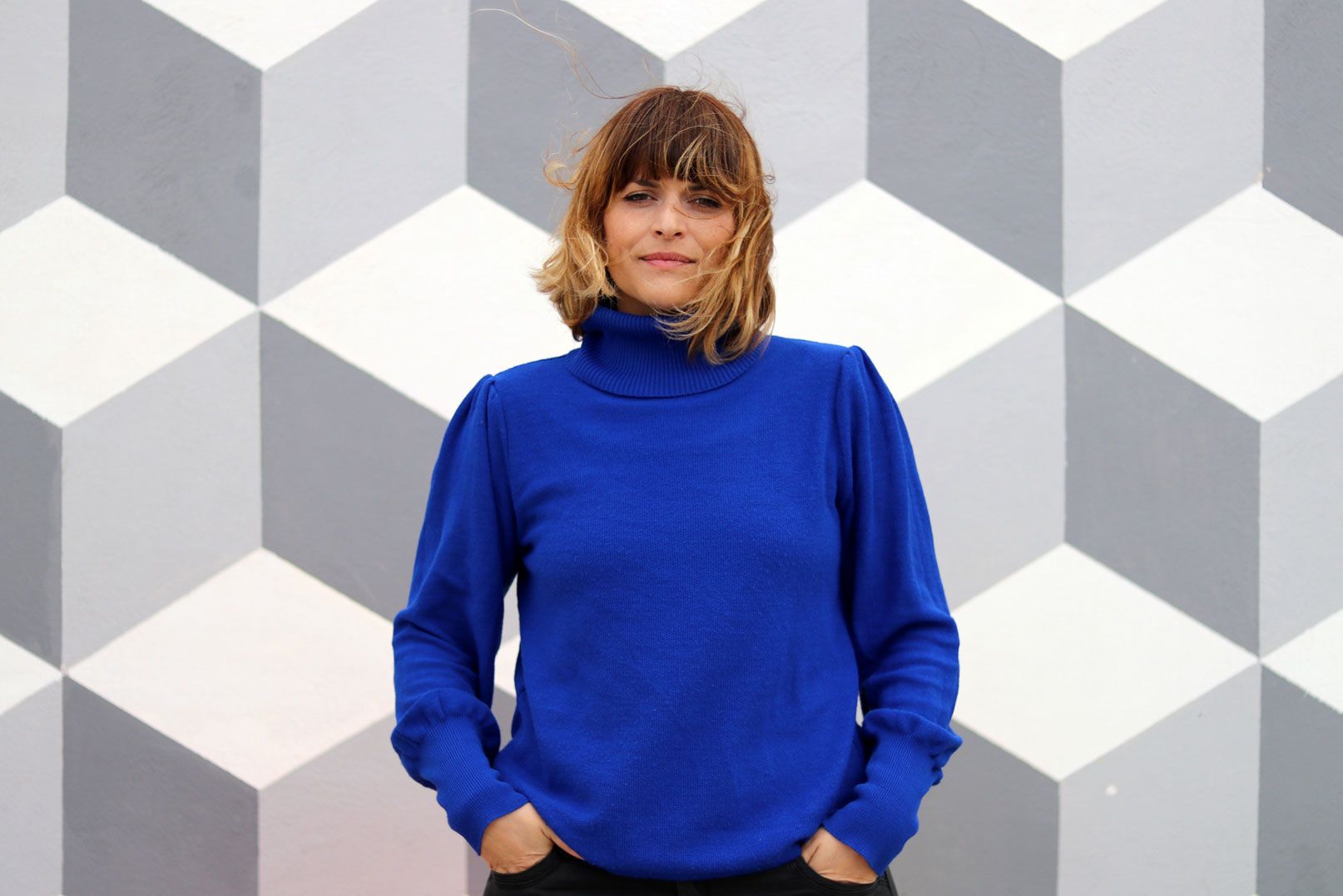
How does Cristina de Cos define the style of Cristina de Cos?
I really like a phrase from one of Silvio Rodríguez songs it translates to: “I am so many things; people can only attempt to classify me”. That’s not a way of getting around the question, but a way of saying that I consider myself to be versatile.
I like trying new techniques and although not all of them turn out to be amazing, I certainly learn something in the process that I can reuse at another time on another project. I know that I will not be good at everything but at least I can try. Experimenting is a way of seeing what you’re capable of, to be constantly moving, observing, retaining, transforming… these are all fundamental elements of growing and evolving. Over time, you will accept that you have natural inclination and learn how to get the most out of it. I for example am very comfortable with the use of the metaphor, surrealism and symbolism… Avoid obviousness, send out less clear or obvious messages that everyone can interpret differently depending on their life experience and history.
“Ana Juan is a heavyweight in the world of illustration. She is also a woman, Valencian and international at that. I don’t know what more you can ask for.”
What is my style? You could say Figurativism, but that holds very little meaning. Everything is “relative”, what could seem horrifying to one person, another could interpret as beauty. It all depends on the meaning that everyone wants to portray.
Thinking about technique, colour and composition: what are the areas in which you feel most comfortable working in?
I feel very comfortable when working with watercolour; I have used them for a long time, they are my comfort zone. I also find the abstract world very attractive. And, of course, I am a complete fanatic when it comes to composition. “Art and Visual Perception” by Rudolph Arnheim is a book that I have read so many times and I always try to have it near me.
With watercolour, I have to say that I have a before and after Photoshop picture. All these digital tools have allowed me to work at a much faster pace, they have also allowed me to experiment more with technique, mostly with trial and error and the essential cmd+Z. I usually use Photoshop to make things more vivid and there are people who have noted the difference between painted and digital work.
In any case, the technique also varies depending on the job: I could be doing a pencil drawing and then colour it in using Photoshop, something with only watercolours, something that is digital… Everything depends on the piece and what I want to express as well as who is supervising me.
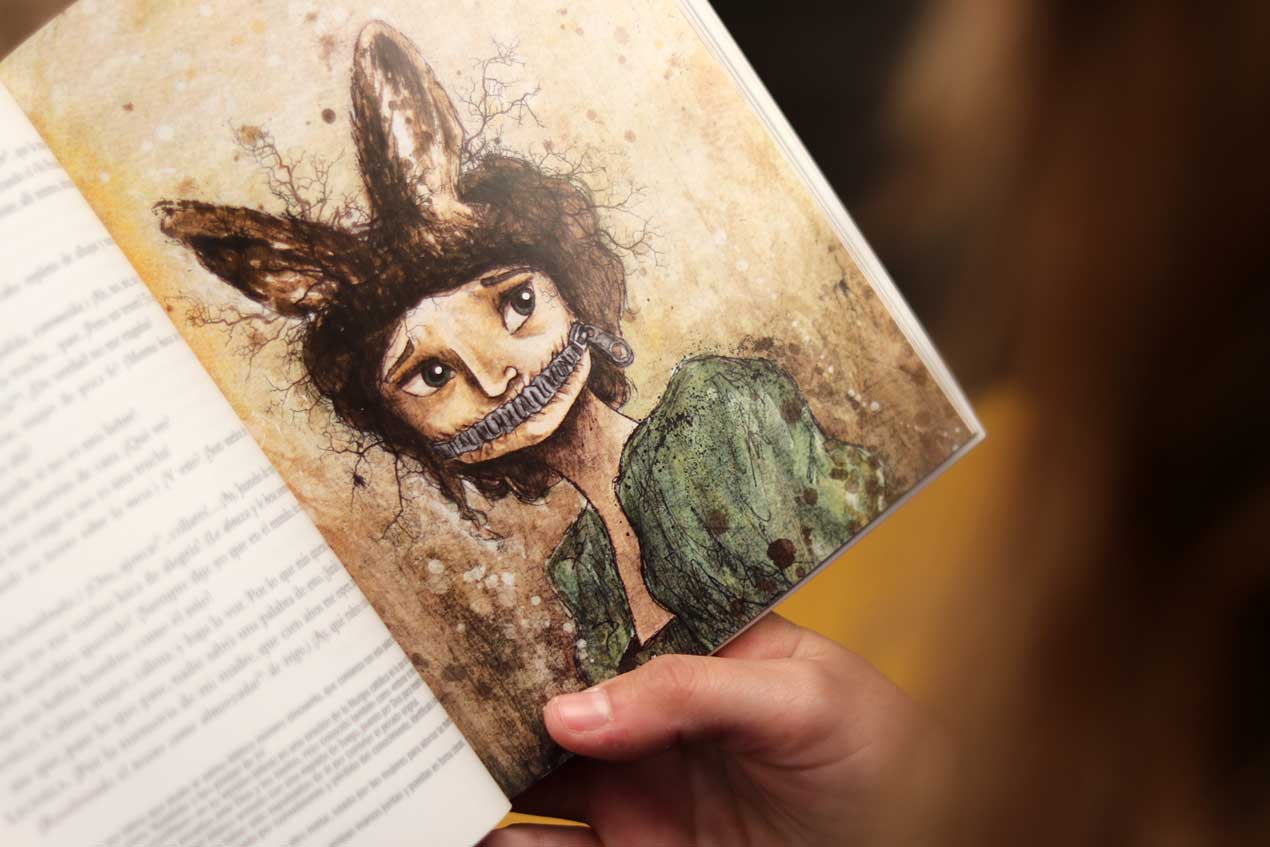
Do you have an idol in the world of illustration? Who and why?
I love and am inspired by Ana Juan, a Valencian illustrator. What drives me crazy is her sensitivity, she tells a brutal story in a very beautiful and tender way. Her drawings are pure beauty despite the fact that many tell stories or revenge, death, hatred, unrequited love… Her universe is violent yet delicate at the same time. She uses pencil a lot, she plays with Tenebrism, achieves what she wants to with shading, with the character, in the scene and pulling it all together to get the result. I would recommend her version of Snow White.
Without a doubt, Ana Juan is my idol and a heavyweight in the world of illustration. She is also a woman, Valencian and international at that. I don’t know what more you can ask for.
Has illustration always been your thing, or do you have another creative impulse?
I like all the visual arts. When I studied Fine Art, illustration wasn’t as fashionable as it is now, there wasn’t a Masters or specific materials for it. Illustration has therefore been a product of my evolution and my circumstances; before coming here, I studied sculpting, drawing, painting, set design…including painting walls and ceilings with a broad brush, which I love!
I have also exhibited my work in galleries; I am part of a group called Art3 along with two colleagues; Lucrecia Moreno, who is also a professor at CEU Valencia, and Pilar d’Ocón. The three of us come together in Art3 and organise one off expositions, which are always dedicated to a cause or an NGO.
However, there was a time when I could not fill the space or the expense that painting required and because of that, I left the large-scale jobs and started to focus on the small. That is why I started to illustrate.
Illustration will be where I can express myself and create. My latest creative impulse has been to study the Master of Design and Graphic Communication at CEU UCH, where I have been able to broaden my horizons in the world of design.
About your creative processes, how do you tackle a blank piece of paper? Where do you turn to for inspiration?
If I told you that, I do not look on Google or Pinterest I would be lying. New technology has created a new space, but there are still resources from all aspects of life: focus on the tiny details; scenes of films; phrases of books… or sometimes when someone tells you something, one word stands out and, that is all you need!
Inspiration can come from anywhere at any time, clearly, it is important to have an open and alert mind-set; visit exhibitions; read; travel… Nourishment is essential: you have to feed your imagination so that it does not dry up.
Tell us about your portfolio: Is there an illustration or work that you are particularly satisfied with or that has a special place in your heart?
I think one in particular called El Hálito, which is about personal growth. It’s about a part of my life when, for personal reasons, I was looking after an elderly woman for a period of time and it reflects on what both she and I learned.
I have worked in a multitude of environments and different places: in cafés, hotels looking after old people… and I now realise that all of this nurtures you. Getting to know people in different environments makes you a lot more conscious of how lucky you are and how lucky others are, it also helps you to empathise with different types of people.
With my art, I want to express what all these experiences have brought me, what I have learned about myself: about my likes, my reactions, my sorrows, my frustrations, my values…
From Fine Arts to Graphic Design: What are you learning at the Escuela Superior de Enseñanzas Técnicas (graduate school of technical teaching) that is helping you in your current profession?
Right now, what comes to mind is a logo that Miquel Barceló did for the 40th anniversary of the University of the Balearic Islands, which he did free of charge. This drawing has generated a lot of controversy because in reality it is not really a design; it is a drawing of a good artist and not the work of a designer.
I recognise the need for expertise in my work: the layout of a publication is important because text and illustration come together and, as an illustrator, I need to have the necessary knowledge to control the whole process. I want to know how my work will turn out, what my initial idea will look like in its final format. Because of this, I think that, if you want a logo, you should turn to a designer. In addition, if you want a painting you should turn to a painter.
“I am comfortable with the use of the metaphor, surrealism and symbolism… Avoid obviousness, send out messages that everyone can interpret differently.”
In the same way, that if I tell you that there are designers that do illustrations but they are not up to scratch, it is simply because they are not illustrators. Everyone has their field and their space.
I like to know what I am doing and I love to be learning all the time, especially if it is related to creation and art. Graphic design is directly related to art as well as composition. I now realise that in the past I have done projects on intuition and I can see the mistakes in typography, in composition…that hopefully with the knowledge that I am gaining I will not make again.
Cristina de Cos is part of the Asociación Profesional de Ilustradores de Valencia (Professional Association of Valencian Illustrators), an organisation that safeguards the rights and well-being of the profession. In her work, which is voluntary and committed, Cristina collaborates to support the work of her colleagues and draw attention to the profession of illustration in the region. She comments, “As illustrators we are not limited to doing little drawings. Although it may seem like it, doing little drawings isn’t that easy”.
You constantly mention composition and its importance in visual arts. In your opinion, what exactly is composition?
Composition is balance; it is the foundation of a good product. It is what makes something work, or not. Composition is everything: you can have beautiful text, but if in the process, you have not considered the weighting, the empty spaces, the movement, the energy and colour then you will defiantly not obtain a great result. Having an idea of composition helps the finish of the product not to be fortuitous but the result of thorough study.
Tell us, what is the big dream for Cristina de Cos?
In a couple of years I see myself doing what I’m doing, but I have to confess that my dream is to make a children’s album, something which I’ve never done before. I have illustrated loads of books but I have a children’s album in the works.
A children’s album is like a story in the fact that text and image coexist. What differentiates it from a story is that in a children’s album you cannot understand the text without the image and vice versa. It is not the same in an illustrated story where the illustration support the text. In the album, illustration enriches the story with images and the imagination of the illustrator.

Cristina de Cos illustrated the novella “Antxón, el zombie. Cachitos de mi vida” (Anton the zombie. Pieces of my life) by Cecilia Alonso, winner of the I Premio Diquesí de Literatura Infantil y Juvenil. She has just illustrated “La magia oculta” (Hidden Magic) and she continues to work on other parallel projects related to illustration and the graphic arts.
Learn more about Cristina de Cos and her works on Facebook, Instagram and her blog.












